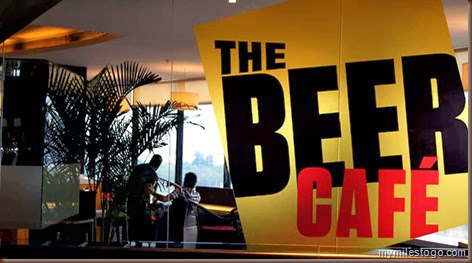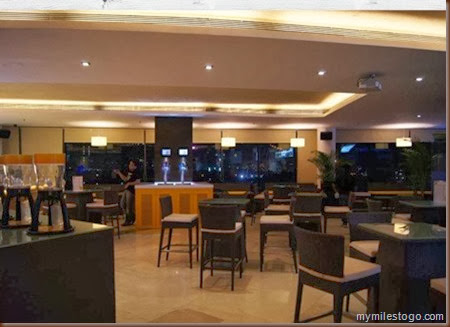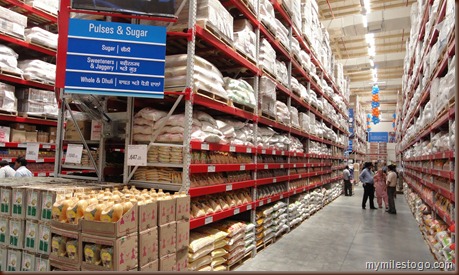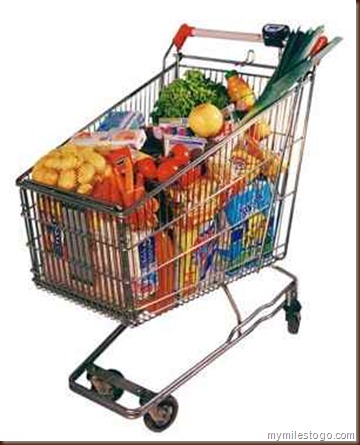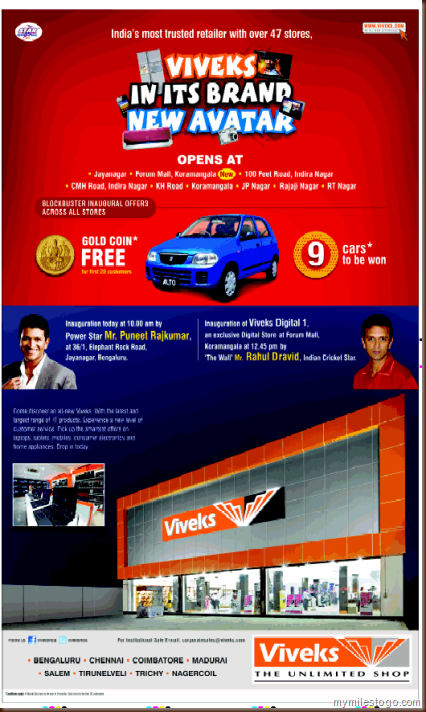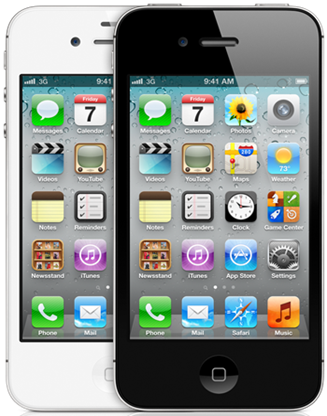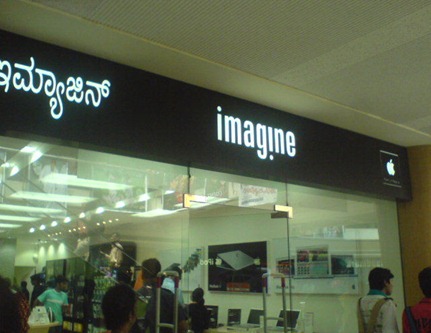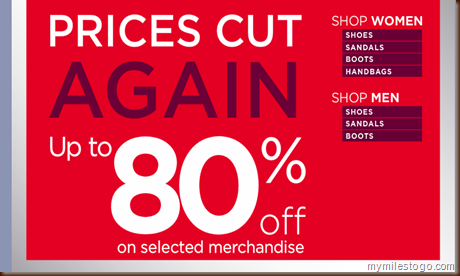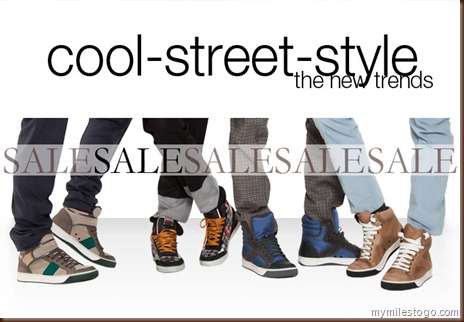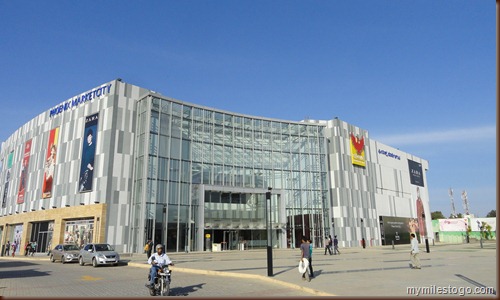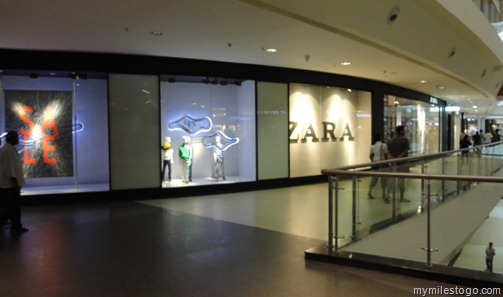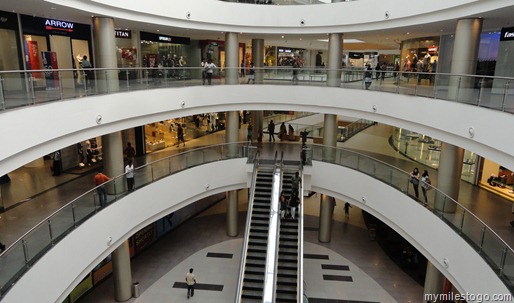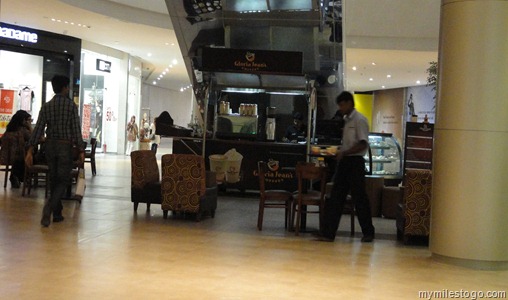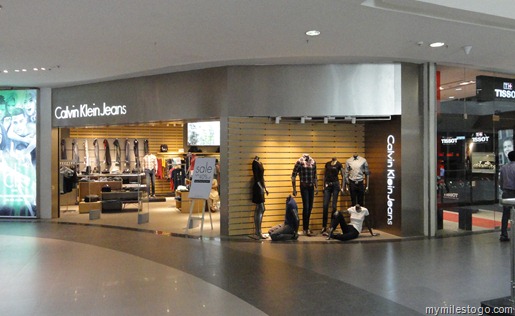04 July, 2018
SS EOSS 2018 is a full house
06 December, 2017
How Cinemas impact Malls
19 July, 2017
GST at Cinema Theatres
21 November, 2013
Brewing Cheer with Beer!
I recently happened to meet Rahul Singh, Founder and CEO of “The Beer Café”, an upcoming chain in Delhi NCR, based out of Gurgaon. Rahul comes across as an affable person, having spent over 20 years in the Indian Retail Industry. Before turning entrepreneur, Rahul was working for Reebok as Executive Director and was responsible for sourcing apparel for domestic as well as export markets. An electrifying guy, Rahul seems to have a natural flair for entrepreneurship. It was a chance meeting to discuss a business proposition but turned out to be a very engaging 90 minutes one on one. Prior to The Beer Café, Rahul was responsible for creating the first ever indoor Golf centre along with F&B and Entertainment at Gurgaon, at the upscale Ambience Mall.
I couldn’t resist but to ask Rahul how many months did he take to come up with the idea of a Beer only place. He was quick to retort saying that it took him just two months! I loved the way he simplified his method of narrowing down the concept. According to Rahul, there are three broad categories in the F&B Business – Fine Dine, Quick Service and Fast Food. He chose the Fast Food model. Within that, there were two options – to focus on food or beverage and he chose the latter. And within Beverages (read Coffee Café chains like Café Coffee Day, Barista, Costa Coffee, Gloria Jeans and Starbucks which have more than 2,000 cafes in India), he chose cold beverages and that’s how the idea of Beer Café was born. Simple idea that relies on classy execution.
Rahul wants his chain to be the CCD of beer and conversations. Alcohol frees up the mind and the soul and today, one has fewer choices to consume a pint of beer, either at a restaurant or at a Pub (home parties are a limited choice though). So, he wanted to set-up Beer Cafes in convenient locations where people could drop by with their friends or colleagues at work for a quick chat or a relaxed conversation.
The Beer Café now has over 11 locations within Delhi/NCR and would have about 30 operational outlets within the next three months! With VC funding coming in, Rahul hopes to grow the café network substantially over the next couple of months. His only gripe: Real estate costs of First World with consumer spends of Third World. Every Retailer would agree to this quote. Operating Costs, especially store rentals are extremely high and staff attrition is another big challenge. Rahul is now looking for an able COO to run the business, so he could take a bigger role in managing Strategy and Expansion.
The café is very appealing, with bright lights and a friendly attitude of staff. On a weekday evening when I passed by at the Beer Café at the Ambience Mall at Gurgaon, there were many who were having a good time seemingly. And many more would be in times to come.
18 September, 2012
The Retail FDI brouhaha!
Popular Media is in full force discussing the pros and cons of opening up FDI in multi-brand Retail, announced by the Manmohan Singh led Union Government of India on 14 Sep. 2012. Finally, it happened. Rather, it had to. On 9 Jan 2012, the same Government allowed 100% FDI in Single Brand Retail, acting as a precursor and paving the way for the current policy decision. The UPA Alliance which leads a multi-party coalition Government has finally had the spine to push this through, alienating some of its own partners putting its Government in jeopardy. With the current policy in place, it means that multi-national Retailers such as Wal-Mart, Carrefour, Tesco and their likes can invest in India on their own as well as in Joint Ventures with Indian partners or Business Houses. But, there is a catch. FDI in Retail has been made a State Subject which means that each State has to provide an approval for each partnership that is proposed and to be allowed to be operated within its precincts. This is a bit absurd, to say the least. The policy states that over 30% of input must be locally sourced, which in my opinion is a very good thing for Indian traders and businessmen.
(Suggested Reading: Starbucks in India)
So, lets see what’s in store for consumers with multi-brand FDI in Retail;
Pricing
By allowing FDI in Multi-brand Retail, the end consumer is expected to get better pricing for most products. In case of Agri-products, even the Farmers are expected to command a better pricing since they would be dealing directly with the Retailers. Since these Retailers purchase large quantities of products from FMCG companies directly, they would be able to get better margins and would thereby pass them on to Consumers. This is largely in case of Grocery Retailing. It would be similar in Electronics Retail too. Fashion Retailers who run a chain of stores would be able to procure their merchandise at better rates from manufacturers and would again pass on the benefits to their customers. This is one important area where everyone gains!
Assortment
At the moment, products manufactured / produced in one part of the country are not available in many other places. This is mainly because of Supply Chain Constraints. Multinational Retailers don’t just bring big bucks, but also the knowledge and know-how of how to do things better. This, would be an important part of the proposed Retail expansion of Organized Retail, with traders getting more scope for their products. Customers will get a wider variety and range than before which will throw open new options and opportunities for consumption.
Generate Employment
Retail trade as a whole employs about 8% of the population in the country, directly and indirectly. These people are paid a fixed amount as compensation and do not benefit with other Government schemes such as Pension Fund, Provident fund, Employee State Insurance, Gratuity, etc. Modern Retail already provides most of these benefits to its staff. With more and more Organized Retail Stores opening up, it is expected to generate higher employment across the country.
(Suggested Reading: Retail Staffing)
Credit availability
One of the popular qualms is that the neighborhood Kirana provides free credit which the Organized players may not be able to and would hence lose out on. This is incorrect. Spending through credit/debit cards has grown over 6 times in the past decade within Modern Retail. Customers are happy to swipe their cards even for smaller transactions, more for ease than anything. Retailers like Shoppers Stop and Big Bazaar have co-branded cards, thus exciting customers with higher reward points for purchases.
Recreational Spaces
Modern Retail is not just about shopping in a comfortable environment but also includes a lot of fun and entertainment for families. These large stores have F&B facilities, gaming zones, etc. where children can unwind while parents are shopping. It is also an excuse for families to go window-shopping and end up buying something or the other!
And here is why a few segments of the people are against it;
Kiranas would shut-shop
The oft-heard uproar is that Kiranas would shut-shop due to the emergence of big-box multi-national Retailers. This is untrue. Kiranas have their basics right, starting with Location, Pricing, Assortment, Credit to Customers, to name a few. Large Retailers take time to crack even some of these points. Having present in India for over a decade, Domestic Retailers such as Foodworld, Spencers, Reliance Fresh, More, etc. haven’t got their act correct, I would say. If they have a good location, then their pricing is (obviously) not so competitive and even if they attempt to, then they are in the Red. Merchandising is one of the most difficult paradigms of the Retail business coupled with severe Supply Chain constraints in the Indian scenario. Given these, it would be almost impossible for large Retailers to succeed, whether they are of Indian origin or International.
(Suggested Reading: Store Opening )
Secondly, most of the Kirana stores (Mom-and-Pop-Stores) are first generation entrepreneurs in their 40s and 50s who started off their own little corner stores during the 80s and 90s after Liberalization. Some of them include women, who run petty shops in neighborhoods to support their family, sometimes as a main source of income and at times as alternate, additional income. Their children, most of whom are undergoing good education are moving out of the family businesses. Many youngsters aspire to become Diploma holders, Engineers, MBAs, etc. across a wide range of subjects and are hence not looking forward to continue the family’s traditional Kirana business. As it is, many shop owners are not looking at continuing their petty businesses for the coming generations. So I wonder why this hue and cry.
Many Kiranas have already embraced modern Retail. For example, Metro AG which set shop ten years ago in Bangalore now has half a dozen stores spread across the country. Most of its customers are traders and merchants who buy from Metro and sell to end-users (customers). Wal-Mart set up a JV with the Bharti Group a few years back and runs Cash & Carry Stores in Punjab, Haryana and Rajasthan. Its main focus is on Kiranas and Retailers to whom they sell stuff in tonnes! Even in big cities like Mumbai and Chennai, it is quite common to see Retailers shop at the likes of Reliance Mart and Big Bazaar, given the substantial savings.
Kiranas are a tough lot and represent the well-entrenched Indian Entrepreneurship and cannot be unseated so easily. Long Live Kiranas!
(Suggested Reading: David Vs. Goliath)
29 June, 2012
Another New store Opening?!?
Retailers in India seem to be continuing their efforts to open new stores, despite a slowing economy, higher import values, a falling rupee, increasing inflation and a weak consumer sentiment. This has been evident in the Retail Sales over the last two Quarters of this calendar year especially in high-value items such as A/Cs, Refrigerators, LCD TVs, automobiles including two-wheelers and four-wheelers. On one side, Retailers are offering huge discounts to lure customers – in India, Q1 & Q4 (for Financial Year starting April onwards) are essentially the most difficult times for clearing inventories and it is relatively easier in Q2 & Q3 due to the impending Festival and Marriage seasons. The above mentioned macro-economic factors haven’t helped them either. And Product ECommerce (excluding Ticketing services which account for over USD 8.5 Billion) which is estimated at over USD 2 Billion (approx. Rs. 11,500 Crores) is the biggest competition today for many Brick & Mortar Retailers, at least in the metros and mini-metros where Consumers have a reasonably quick and safe internet connectivity. And on the other side, large stores are being inaugurated in the hope that consumers would still like to visit and shop. We truly live in two contrasting worlds, to say the least. India's largest retailer, Future Group, which runs Central Malls, Pantaloon Fashions – a Department store chain, Big Bazaar Hypermarkets and FoodBazaar supermarkets among various other formats and models has scaled back its expansion from 2.5 million to 2 million square feet this fiscal year due to an economy growing at its weakest in nine years. The growth rate was 5.3 percent on an annual basis in the March quarter.
To drive footfalls to the store, continuously and consistently is one of the key challenges for Retailers anywhere in the world. That the population in India is huge is a bonus factor. However, conversions are miniscule. In the apparel and lifestyle formats, conversions range from 8-15% (those who buy as against those who enter the stores) while in consumer durables and brown goods, it is even lower. For Malls, which are destinations and are expected to attract significant footfalls, the conversions range from 3-5% and maybe lower in some cases (on a lower base of footfalls, usually). Given this fact, Retailers are in a frenzy opening newer stores within existing cities as well as in newer cities. One such example is Viveks, one of the oldest Consumer Durable Retailers in South India which was also the first one to start an EMI option in the early 90s when the Indian Economy was just opening up. It is rather surprising that the Retailer chose to remain a regional player, unlike its later counterparts such as EZone (part of Future Group) and Croma (from the house of Tatas) who quickly increased scale and went national with their presence. EZone is having operational challenges but that is not because of expansion but rather due to internal issues. To add to the woes of Consumer Durable Retailers, Hypermarket Chains such as Hypercity, Big Bazaar, Star Bazaar, etc. also stock Electronic Goods.
Challenges for Consumer Durable Retailers
Footfalls
To expect continuous footfalls all through the week is rather not practical. Instead, Retailers focus on weekend shopping festivals, usually for short durations. This is the time when Shoppers visit Retail stores and chances of conversion are higher!
Service
Superior Customer Service is something everyone talks about but is not generally followed all the time. And Customer Service is not just a gentle staff doing some smooth-talking and smart selling. It includes all the moments of truth – from hygiene factors such as lighting, A/c, Parking, etc. as well as product knowledge and friendly staff.
Differentiation
Multiple Retailers sell the same Brands and products. So why should a customer actually shop with one Retailer and not with another? Honestly, there is no clear answer. Consumers do not buy products, they buy Brands. And this includes the Retailer’s Brand Value as well, on which they should be focusing on.
Ecommerce
Showrooming – a prevalent concept in the West where shoppers visit Retail stores to check out products and prices but ended up ordering on Amazon.com or other ECommerce portals is brewing in India too. So, the difficulty of touch-and feel is negated. Another challenge is paying by Cash which is also something that ECommerce players have started over the recent months. Lastly, the convenience of getting the product on hand immediately – something that ECommerce players are finding it difficult to deliver but are successfully meeting customers’ requirements within 2-3 days in general.
With so many challenges, I wonder at times whether Retailing is worth the effort at all. For some, it’s a question of growth, for many it’s a matter of survival. With the opening of FDI in Retail sooner than later, the Big boys with boat loads of cash are going to lap up market share easily and faster. Interesting times ahead.
08 June, 2012
Franchising–The first step towards Entrepreneurship
Franchising has been around for long. Many global brands such as Adidas, Benetton, Levis, Subway and a lot more have grown globally due to their extensive franchisee network. Even in India, Madura Garments (which owns brands such as Peter England, Louis Philippe, Van Heusen), Arvind Mills (Lee, Wrangler and Arrow), Nilgiris (a chain of Supermarkets), Gitanjali Limited (which retails brands such as Asmi, Gili, D’Damas, Lucera, etc.) Crossword Book stores, Barista (Café chain) and many other Retailers have grown their businesses through successful Franchisee Partnerships. Franchising offers a quick scope of expansion for the Retailer while the investment is incurred by the Franchisee. Many first timers and wannabe Entrepreneurs choose the path of Franchising because it is an easier model to crack – the brand (is usually) established and has equity in the market, which pulls footfalls in to the stores. In case the brand is relatively new, then the Franchise fee (usually a one-time fee paid by the Franchisor to the Franchisee) is low, keeping his / her investments within reach. Kaatizone, an Indian QSR chain with a presence largely in South India is on an expansion spree through Franchising. Mr. Kiran Nadkarni, CEO, Kaatizone told in an interview recently. “Franchising has helped us in two major ways: We have been able to generate momentum in expansion quickly. Secondly, the local entrepreneurial talent has helped manage the store operations and brand experience better. Since we are planning to set up a large number of stores, franchising is the best strategy for growth.” Kaatizone has 19 franchises in six cities now and is planning to expand across the country.
The gestation period for recovery of investment can vary from 6 months to 3 years, depending on the location of the store (Malls, High Streets, Corporate locations,etc.) product category, and Brand identity and recognition. Investments could vary from Rs. 5 lakhs to Rs. 2 Crores, depending on the Brand. Some Retailers charge a one-time Franchise Fee and others charge monthly/annual commission on Sales in addition.
Advantages of Franchising
Scalability of Business
The Franchisor would be able to scale up instantly by going through the Franchise model. The prospective Franchisees could be spread across the country and hence the business could be expanded quite fast. This is one of the most important reasons that Retailers choose to go the Franchising way.
Immediate availability of capital
The Franchisee brings in the additional capital that is required to invest and operate the business which is a very important factor for the Franchisor.
Day to-day Operations
Usually, the set-up costs, which are substantial are borne by the Franchisee. He also bears running costs such as daily operational expenses (manpower, electricity, housekeeping, interest on capital, depreciation, etc.)
Drawbacks of Franchising
Customer Touch-points
One of the biggest drawbacks in Franchising is that the Retailer usually loses touch with the customers. The front-end is managed by the Franchisee and hence the Brand doesn’t have much role to play in the Customer Engagement as such.
Loss of Operational Control
The daily operations are managed by the Franchisee. Although there are parameters which need to be followed, there are occasions when the Franchisee takes things under his control which could be potential threats in terms of running the business.
Loss of Focus
Once a Franchisee believes in the model, he / she expand their business across various brands and categories. Therefore, the required focus on the business may dwindle over a period of time. It is quite unlikely that the Franchisee would spend the same amount of time and effort on businesses that don’t yield similar returns.
FDI in Retail has already opened up for Single Brand Retail and the country is eagerly watching the Government’s steps towards their decision on allowing FDI in Multi-Brand Retailing. This is indeed a good time for individuals and entrepreneurs in the making to take their first steps towards Organized Retail through a Franchise Opportunity.
Best of Luck.
04 May, 2012
Apple–Smart Product or Smarter Retailer?
After a lot of careful consideration over the past few months, including reading various literature online and discussion with friends and users of the iPhone, I finally decided to take the plunge. Yes. Now I own an iPhone 4S 32 GB. So, what? Actually. It is just another phone, in my opinion. It is indeed a true case study of how an ordinary product can be made an extraordinary success with simple, yet effective Marketing. One must learn from Apple in this regard. Much has been written about the technical specifications, uniqueness and superiority of the iOS of the iPhone, the Siri and various other features and hence I wouldn’t delve into it. Nor am I a technology expert to rip through comparisons with an Android phone (from Samsung or HTC ) or a BlackBerry or a Windows Phone. Oh yeah, by the way there is Nokia too. Apple iPhone 4S, for me lacks some basic stuff – such as a favourite tune as an alarm; select many / select all in the email box to delete and many such small features. Wonder how the Apple engineers skipped these and a bigger wonder that Apple Marketers kept them low-key, promoting various other features. It is a good smartphone but can be a lot better. Will leave it there.
10 days ago, I ordered my iPhone online – through www.indiaplaza.com where I work. Not just because of a particular loyalty – but also because of the Price. The phone is about Rs. 2,000 (USD 40) cheaper while buying online, compared to the ones sold at an Apple Store or other Electronic Retail chains such as Croma (from the house of Tatas), Ezone (part of the Future Group), Reliance Digital, etc. Two months ago, I bought an iPod Touch (also from www.indiaplaza.com) and the price online was a lot cheaper – I got a 10% discount while the company was celebrating the birthday of Apple founder Steve Jobs. In my view, the iPods, iPhones and iPads should also be sold through Department store chains such as Shoppers Stop and Lifestyle too. After all, it is indeed a lifestyle product as promoted by Apple and not just merely a gadget. The Apple stores are more a novelty than being electronic stores. They are a lot more engaging, inviting and most importantly (well stocked). And I am referring this from an Indian context.
I visited the Apple Store twice in a span of two months to buy accessories for my iPod and iPhone. Every time, the staff have delighted me. They speak little, but with a lot of sense. I have already bought Rs. 10,000 (USD 200) worth accessories from the Apple Store and I believe it is only because of the wonderful staff interaction that I have had each time. On the first instance, I wanted to buy a case and screen guard for my iPod and the staff showed me gladly all the varieties that they had – without indicating any obligation on me to buy. I walked up to two nearby stores that also sold mobile accessories to check out what they have – at one store, the staff was busy canoodling with his girlfriend (I guess) on the phone and had least interest or respect for the customer who came to spend money. At another store, they had stocks for every damn model but an iPod. The staff felt sorry but couldn’t offer anymore. I came back to the Apple store and ended up buying from there. I repeated my visit a month later – this time to buy a screen guard and a case for the iPhone. I visited various other electronic retail stores who didn’t stock them, and were more interested in selling larger items such as LCDs, Washing Machines and Refrigerators. Even Croma, which is known to stock a wide range of accessories wasn’t carrying anything specific for the iPhone.
Back at my favourite Apple store at the Forum Mall (Bangalore)m Simran, the sales assistant was not just being polite and interactive but was also non-obtrusive. She allowed me to have a look at things, touch and feel them and never got perturbed by the questions that I enquired regarding the various options. She was happy to answer as many and even offered a few ideas such as a “Matt-finish” scratch guard that would not leave traces of oil from the face and which is easy to wipe off. She suggested a case that not just matched with the phone but was sleek and had a good form factor. Amongst other things, she also showed a few headphones and a couple of JBL speakers. And eventually, I ended up buying a noise-cancellation Apple ear phone worth a 100 dollars (Rs. 4,800) which was completely unplanned! All in a span of a few minutes. Now, that’s what I call “engaging customers” smartly. She knew my preferences for music, realised I had an iPod Touch and an iPhone and that I could, most importantly – appreciate and enjoy the stuff that they make and sell. Hats off to their level of knowledge and customer service. Next on my list: JBL Speakers for the iPod.
I have been using a Samsung Galaxy Tab for the past one year and a BlackBerry for over 3 years. Its been just over two weeks since I have been using the iPhone. Happy with it. But would go back to my BlackBerry any day. I am just that. But all said and done, Apple is not just a product maker but also a smart Retailer. With its unique offering of products, they seemed to have mastered the art of letting customers engage with their products. Single Brand Retailers have a lot to learn from them. Of how not to sell, but to make customers buy the products. And appreciate them all their life. Kudos Apple.
07 April, 2012
Music can convert more customers!
I asked him, “are there people in your store who have had a love-failure"??” and obviously he was confused. He called for his supervisor and I repeated my question. Both of them gave me a warm smile and declined that there wasn’t anything of that sort. So, why play such boring music of love-songs at a Hair Salon post noon?!? I quipped. He was quick to change the music and I told him that it wasn’t for me but for his employees too. This incident happened recently at a hair salon when I was out for my monthly activity. I have been a firm believer that “air play” or the music that you play at your retail store, irrespective of its format has an impact on the customers and their tendency to shop/consume more. And there is no standard laundry list of what kind of songs to be played across formats – these are learned over time and are specific to the history (of customer behaviour) and the geography (of the store’s location).
A salon must be playing peppy songs most often. As it is, a hair cut or a similar activity is a reasonably boring one (and I specifically refer it only to men) while women seem to focus more on the job being done. The staff must be happy and cheerful all the time – after all, they promise to change the way one looks and this is an important thing that most Senior Managements at Retail companies give a miss. While they focus on clean and hygienic environments (which is a must in a salon), things such as mood-lighting and sound (read: music) is often ignored, though not intentionally. It could be different for various services within a Salon. For Ex., the music to be played while a hair-cut is being undertaken could be significantly different than when, say a body massage is being given. I was a month ago, outing at a Kerala Ayurvedic Massage centre, its more of a therapy than just a massage, I would say and to my surprise, there was no music! The whole place was smelling of essential oils, which seem to be suffocating at some stage. I did share my feedback with their front-office and they gave a lame reason – that the speaker wasn’t working. Hope these things get corrected.
For my new born child, I was looking for a cradle and visited many stores that stocked “Baby Products” in Chennai. Not one was playing music! They could easily be selling music CDs and DVDs for kids of various age – though these are low-margin, low-value items, they increase the basket size without much effort. Mom and Me, the baby products and maternity store operated by Mahindra Retail was playing a DVD on their LCD screen which was located 15 feet above the ground. One had to look up all the way to see what was going on. Ofcourse, it was better to play something than nothing, I felt.
Saravana Stores, a regional Retailer based out of Chennai which has one of the highest footfalls into their million square feet stores recently was playing “Jam” by Michael Jackson, while most of their customers wouldn’t have even known the pop icon. India’s largest Hypermarket Retailer Big Bazaar had sometime ago tied up with a Radio station with national presence but which plays regional songs. Makes sense. Retailers need to talk the same language as the customer and create the mood for consuming more. Cafes and eateries such as Café Coffee Day, Gloria Jeans, Pizza hut, etc. typically play the latest hits while a fine-dine restaurant plays mellow music, usually instrumental such as a piano or piped instrument. Pubs and Bars, as always play music that is so loud that patrons have to speak at the top of their voice to be heard. Grocery stores may choose to play local music but not something that is very jazzy! Department Stores and Malls too play soft music most often. The moments of truth, irrespective of the retailer’s origin or market remains the same.
The power of air play is huge. Few Retailers have realised and used it well. Hope to see many more use them smartly – afterall, good music can aid in higher conversions!
29 March, 2012
Instead, they drive away footfalls!
I was recently in Chennai and happened to see an advertisement in the newspaper from a leading footwear Retailer announcing End of Season Sale and massive discounts. Someone within my friends circle had even mentioned about it on Facebook. Excited I was like many others, landed up at the store on a Saturday evening. To my utter disappointment, the store was in complete disarray. The owner was standing in one corner with a long face and the sole salesman was running pillar to post, literally. There were atleast 20 customers within the store – a few on the lower level and mostly women on the upper floor. I will not mention the name of the Retailer who is well renowned in Chennai and I only assume that this incident was an aberration than norm. Hope it gets better sooner than later. How I wish...
Some key learning that I took out of this episode;
- End of Season Sale is not just a season to liquidate stocks. It is also an opportunity to attract newer customers from across the town
- To mention “Upto 40% Off” in the advertisement and finally offering unknown brands at such a discount or lower is a wasted effort
- Women are slow shoppers – they spend on an average 2-3 times the amount of time than men while shopping and also try 3-4 times more footwear than men
- It didn’t make any sense to stock women’s products on the upper level – while most customers did walk up, it would have been a better idea to stock them downstairs and allow them more space to move around
- There were just two boys running around helping customers in each floor. Knowing fully well the additional footfalls that are expected due to the newspaper advertisement, it would have made sense that there were more helpers in the store to assist customers
- There is a tendency to believe that discount-seekers are of a lower profile than normal customers and hence it is ok to serve them less! Bad Idea! There were more cars parked outside the store than two-wheelers. And most of them who paid for the product used a debit or credit card
- Worst of all is to stock the products badly – in carton boxes and allowing customers to search for their sizes
At the end of it, I found nothing interesting that were on Sale; instead I walked out of the store rather disappointed. disgusted more on the owners’ interest levels and attitude than the fact that not much was available to buy! Will I visit the shop again? Yes. I guess it was more of a one-off case and would allow the Retailer to correct themselves!
19 February, 2012
Phoenix Market City–Everything for Everyone!
Yet another mall opened its doors recently in Bangalore – this time in the far eastern limits of Bangalore, near Whitefield. After a successful launch at Pune and Mumbai, the Mumbai-based Phoenix Mall Management has launched their prestigious project in Bangalore. This is the largest mall in town with an estimated 1.80 million square feet of space – a multi-development concept and one of its kind in the city that also includes a half a million square feet of office space, a 5 Star hotel with 236 rooms, a service apartment with 174 rooms and a multiplex spread over 55,000 sq ft. The external beauty lies in the fact that it is horizontally spread than vertically – all of four floors and a lower ground which connects directly to the most spacious parking lot which is well spread and brightly lit. The construction architecture is minimalistic with no jazz – focus is on the Retail Stores than crazy designs and confusing walkways. This mall also launched for the first time in Bangalore, marquee brands such as Zara, the Spanish fast-fashion retail chain in a JV with the Tatas (Also Read: Starbucks India – a TATA Alliance), Calvin Klein, Gant and California Pizza Kitchen. The main anchors include Big Bazaar, India’s largest Grocery and Homewear Hypermarket chain, MAX Hypermarkets, Reliance Trends, Reliance Digital and Reliance Time-Out. Regular Mall names such as Benetton, Tommy, Fab-India, Titan, Louis Philippe, Arrow are present while a few such as Café Coffee Day, Barista are conspicuously missing!
The best thing about the mall is that it has everything – for the first time, multiple entrances – from the main entry gate, from the sides (Drop-off area), and from the basement parking area. The Ground Floor (entry level) is rather wide and broad – spacious enough to make it appear like a premium mall. Tommy, Gant and Zara welcome visitors with their bright signages and show-windows. Once inside, the shopper gets to see the wide expanse through well thought out and planned cut-off areas – from one floor, there is ample visibility to other floors.
The anchors are also well spread. Big Bazaar is closer to the Parking Area so it would be easier for customers to take their shopping trolleys to their vehicles; however one needs to walk almost half a mile to the main road if they don’t have a personal transportation – an area that must have been given thought to. Max Hypermarkets welcome you once the shopper enters from the lower basement. Pantaloon Fashion store is placed in the upper floor while Reliance Digital (the Electronics Store) is in the lower basement too. There is a small gifts shop – all of 400 sq ft which is packed with curious onlookers for all the fancy cheap Chinese imports that the store has. The Foodcourt is as always, on the top floor nearer to the Cinema Halls while the Gloria Jeans coffee shop is sadly placed beneath an escalator with sparsely spread out seats – some wooden and some sofa seating in some random manner! Obviously, the café doesn’t commensurate its great coffee with its ambience. The other coffee shop, Costa is placed on the top floor – some logic I guess!
I walked for over an hour, before understanding the layouts and placements, familiarizing myself – I scored lesser marks in my own purview although I wonder if shoppers would get to know it even after as many as 3-4 visits. Zoning, which I know personally had taken many months with inputs from some fabulous international consultants is to say the least, sad. Maintenance costs would be sky high I guess – air-conditioning such a wide area with two dozen security guards for over 14 hours a day is not going to be cheap or easy. The escalators – onward and downward are placed next to each other thereby not diverting traffic in various directions. Signages- although we don’t read as much – are scarce.
Overall, this Mall has tried to become everything to everyone – a premium mall in one-fourth of its space and a normal neigbourhood shopping centre with the rest. While Big Bazaar and Max are expected to draw a different set of clientele than, say a Zara or Gant, they are placed far behind – from a real estate point of view, this probably makes sense. But just that. Most people who intend to shop at a Hypermarket would be passing through premium retail stores – not only would they find it out of place but also a bit weird. Also, the Hypermarkets, whose predominant customer base are those who depend on autos and two-wheelers would find it taxing to come and shop here. And btw, Big Bazaar has its store close by – within a 3 km distance to be precise. Other than being a show piece, I wonder if they have any other reason to be here. And for the customers of premium Branded Retail stores – the car parking areas are just too far away. Wonder if that would put them off. Except if they have specifically come to shop at, say the iconic Calvin Klein.
Firstly, does Bangalore need such a large Mall? With congested roads and consistently heavy traffic not just at the CBD but almost everywhere in the city, what we need are a number of neighbourhood malls – within a 4-5 sq km radius and within a 15-20 minute drive. And this everything under one roof doesn’t work as much. Bangalore, or most Indian cities do not attract a huge tourist population such as Dubai or Singapore. Nor are our prices globally competitive, rather more expensive. The semi-urban crowd that comes to the larger metros and cities rather stick to traditional shopping areas (Read: Downtown shopping centres, predominantly the semi-organized retail stores). The Mall also needs to attract 3-4 times what the best Mall in town attracts today – to support the single-digit conversions at its stores. For a Mall that is located so far off, it is anybody’s guess if the Mall or its tenants would do well in the first few years. Maybe over 3-4 years, the location would attract some traction.
Needless to say, the group has invested significantly and so have the Retailers. Here’s wishing them good luck in times to come.
14 November, 2011
Customer Service - by Trial & Error!
 |
| iPod Nano |
 |
| Apple Imagine Store, UB City, Bangalore |
A Firefly finally takes off
Monday - 22 Jan. ‘24 is a very important day in my professional life. I complete eight months today in my role as Executive Vice President a...

-
12 December is celebrated annually as Retail Employees Day, an occasion to thank the frontend staff who have taken up Retail as their pref...
-
The world is split into two for the last week or so, ever since India’s self-made billionaire and tech mogul Mr. Narayana Murthy (NRN) said ...
-
It’s been over 5 months since I wrote anything on this blog, especially. Not that I didn’t have anything to observe, even better to share my...








